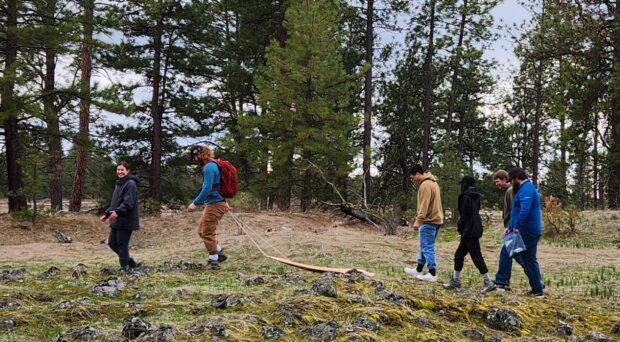
Change is hard, whichever way you’re changing. It always involves unexpected surprises, both good and bad, and extra work to accommodate and adapt to changing circumstances. I learned this lesson again this year, teaching my Disease Ecology capstone class again during Spring quarter. The last time I taught this class was during the Spring of 2021 (I skipped a year when I was the Director of General Education at EWU). That time, faculty at EWU were still teaching remotely, but synchronously over Zoom, meaning all the students had to log in a talk to me at the same time. While the students were conducting disease ecology-themed research projects, I was only able to help them in a limited fashion, with setting up and running their surveys and experiments.
Back in the Spring of 2020, when we all went online, moving my Disease Ecology Senior Capstone class online was a large change, involving a lot of extra work, creating lecture videos and other assignments. This work became very useful since then as I was able to stop just giving lectures and turn the class more discussion-based, using PollEverywhere to gauge student understanding and elicit feedback. This worked very well in the Spring of 2021 when we were all in Zoom. However, the return of in-person instruction to campus since then made it possible to make learning even more hands-on and interactive, and break the monotony of classroom response systems. It also provided more opportunity to interact with my students both in and outside of class, during both lectures and labs, and in the laboratory and in the field.
I have to admit that I haven’t spent as much time updating my class before it started during Spring break (which at our institution amounts to 3 days and a weekend) as I probably should have. I basically just copy-pasted the class from Spring of 2021, made some minor clerical edits, and published it on Canvas. Predictably, there were a number of things in my Canvas course that were already outdated. During the pandemic, I inquired students about their knowledge, attitudes and practices (KAP) in terms of pandemic, including their level of vaccine hesitancy, using an ungraded survey. I had them collate a Q&A on COVID-19 where they had to ask questions and answer other student’s questions in a Discussion post. Even though these assignments were less relevant now, I couldn’t turn these off once this quarter started as students have already started responding to them by the time I noticed.
In 2021, I also had them vote on group project ideas on Canvas, and pestered them about the progress of their projects in Discussion posts, so I could keep track of where they were at. None of these were useful or necessary anymore, and would have quickly become hated “busywork”, since we could just do these in person instead. Fortunately, once I realized my oversight, I was able to turn off most of these “leftover” assignments, with the exception of one of these check-ins that students already responded to. I wish I could go in now and remove these assignments before next Spring rolls around, but technically that’s not possible as the new class will only be created at the end of next Winter quarter. I just hope I will remember to make these changes before last minute next Spring!
As I was teaching the class, I did notice that my use of classroom response systems in a flipped class format was becoming monotonous. I would go to a question, wait for students to respond, either in person, or through their phone or computer, and either move on to the next question if they responded correctly, or briefly discuss what the correct answer would be and why if the majority of students didn’t answer correctly. While this was a good method to diagnose misconceptions and confusion, and attempt to correct it, only a minority of the students participated in the PollEverywhere response system. Next time I teach the class, I should probably make it more clear how important participation is for all students, and incentivize students by including participation points explicitly as Canvas assignments for each module. Now that we were in person, I also trialed going beyond the discussion to include more hands-on activities during lecture. Some of my favorites included printing a complex diagram from our reading, cutting it up into the individual sub-diagrams without their labels, and have the students label them based on the conceptual descriptions in the figure caption, without looking at the book. Takes real understanding to do that! I also printed various conflicting peer-reviewed and grey literature on the origin of COVID-19 (such as National Intelligence Council report vs e.g. the Bloom paper) and led a discussion on what is more or less likely true about the origins of the pandemic, and how we might never definitely know the answer.
One of the great benefits of teaching this class fully in person again was the increased interaction with the students, and the ability to see and assist the development of their projects, and as scientists themselves in the process. As you’ll see below, they conducted a variety of projects, with the inclusion of three graduate students in the class helping the undergraduate students. As in years before the pandemic, I was able to involve them in tick surveillance at a National Wildlife Refuge and tick identification during their first and second lab periods. After selecting their group projects, lab sessions were devoted to their projects, until the last week when we pulled everything together. I had the ability to participate, advise and observe each of their projects, for example accompanying them to assist wildlife biologists in bat disease surveillance. The students had the opportunity to showcase their projects to a visiting class of 3rd graders, where I discovered that some of the students had a passion and talent to captivate children and would make great teachers themselves. One of the projects led by a graduate student found evidence for a fish parasite nematode in water-bodies that were considered parasite-free, and demonstrated that parasitized fish can overwinter and breed. Finally, a project design I was skeptical about working initially, produced clear and potentially publishable conclusions about which off-the-shelf tick repellents were more effective against local ticks. The students had to orally present their project proposals at the annual EWU Student Creative Works and Science Symposium, and their results as a poster at the departmental Capstone Poster presentation during finals week. The final report in the class was a scientific article on their projects and their results. Finally, they had to submit a short summary for this blogpost, which you can read below.
All in all, I very much enjoyed teaching my Disease Ecology class in person again, and was lucky to have a set of dedicated, hardworking students in my class! I do hope that the students also enjoyed it, and learned a lot about the interconnectedness of human, wildlife and ecosystem health, and will take what they learned with them to be used into their respective careers. I feel like I also learned a lot about how to make this class even better and more effective to the next cohort of students! I will report back on how it went next year this time around!
Enjoy a pest-free hike at the Eastern Washingtons Restoration site!
By: Cari Keyser, Abbi White, Natasha Arrasmith, Clayton Schneider and Natalie Barton
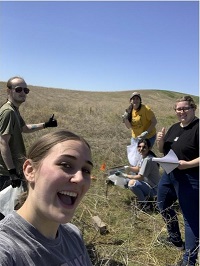
Many people in the Pacific Northwest area of the US enjoy going hiking in the summers but like to avoid the ticks and other ectoparasites that can be present. Our project aimed to identify if ectoparasites are present on the Eastern Washington Prairie Restoration site located at Eastern Washington University (EWU). This is useful information as EWU plans to put public trails in the restoration site for hiking. This information will also be of great ecological use, as we have not done a lot of research on the restoration site because it is new. We completed our study by live-trapping small mammals at two opposite locations on the restoration site. Small mammals are often hosts for ectoparasites, which would tell us if they are present in the area. We trapped twice a week for four weeks. We used Sherman live traps and filled them with peanut butter oats as bait. We mostly caught Deer mice (Peromyscus), which are very common in the area. Once we caught the small mammals they were weighed, sexed, and flea combed for ectoparasites. Along with trapping we also did a “tick drag” along our trapping locations. Tick dragging is when a large piece of fabric is slowly pulled over the ground to see if ticks will latch on. Both trapping and tick dragging had no ectoparasites present. At the end of our study, we concluded that there are currently very little to no ectoparasites on the restoration site. This is good news because it makes the prairie a great candidate for hiking trails.
Plenty of bat mites and healthy skin microbiome, but no White Nose syndrome on bats monitored in Whitman County, WA
By: Autumn Grove, Blake Zimmermann, Emily Tyner and Melanie Novak
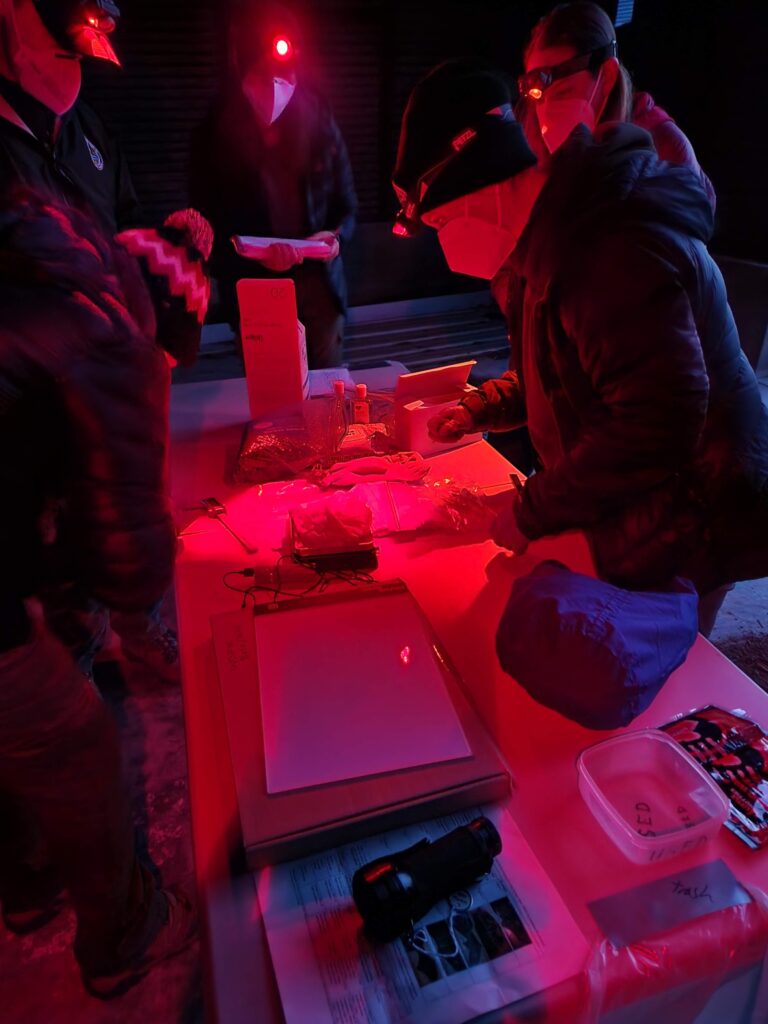
Bat populations across North America have been in harsh decline for the past 17 years ever since the introduction of the Pseudogymnoascus destructans, a white fungus that inhibits hibernation patterns for all bat species local to the contiguous 48 states of the US. This fungus causes a syndrome, known as White-Nose Syndrome named for the characteristic white growths on the face and muzzle, in bats that causes them to wake up during their hibernation period. While awake, the bats exert energy, depleting the vital fat reserves necessary for surviving a full hibernation period. Combined with a lack of insects in winter and dehydration, without these resources, many bats die as a result. Our project continued ongoing monitoring for White-Nose Syndrome in Eastern Washington at an abandoned ranch property in Whitman County, WA, in which a maternity colony (all female) of Myotis yumanensis (Yuma myotis) bats reside within a farmhouse. Bats were collected utilizing harp nets, which are a series of taut fishing lines that cause bats to fall within a cloth “basket” just below. Along with the assistance of the Department of Fish and Wildlife, as well as the Bureau of Land Management, an array of bats was observed for many different factors. These observations include but are not limited to forearm mass index (FMI), potential wing damage, ectoparasite presence, and bacterial and fungal presence upon wing membranes.
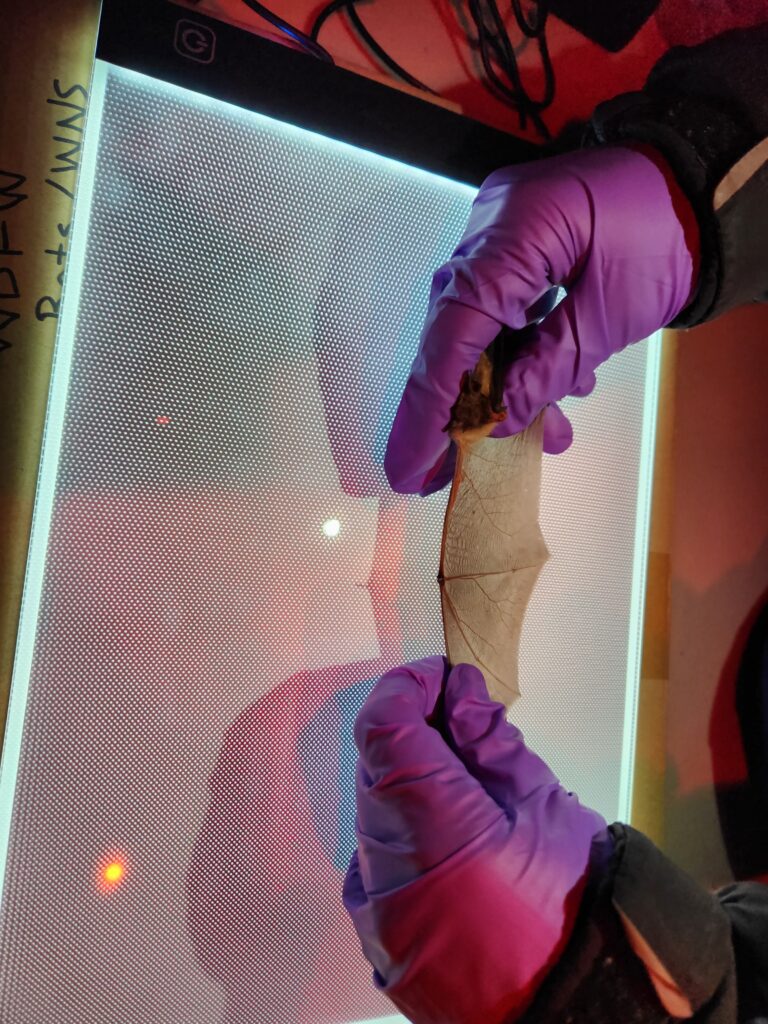
In the lab, ectoparasites collected at the site were all identified to be mites of the Spinturnix genus. Bacterial and fungal swabs of the bat wing membranes were cultured on agar plates and placed in cold conditions, to promote bacterial and fungal colony growth. After approximately three weeks, we observed the grown colonies, and found there to be a diverse set of bacterial and fungal species, none of which were Pseudogymnoascus destructans. Because of the lack of White-Nose Syndrome, we concluded that the diverse microbiome among the bats in this colony were likely resistant to the introduction of new bacterial and fungal species, preventing the establishment of White-Nose Syndrome within the population for now. With continued monitoring, we hope that the eastern portion of Washington remains free of White-Nose Syndrome in its bat populations, and if it is ever detected, that it is eradicated or mitigated to the fullest extent possible.
Mapping out the temporal and spatial extent of infection by a native nematode in an invasive fish species at a National Wildlife Refuge
By: Sarah Flores, Eric Greene, Ben Wulfestieg and Madilyn Odiorne

Introduced species function as highly efficient predators and resource competitors to native species. It is important to understand the potential limiting factors of introduced species’ success and how it relates to large-scale ecosystem impacts. The brook stickleback (Culaea inconstans) was introduced in eastern Washington in 1999 and has high population densities. These fish are parasitized by Contracaecum multipapillatum, a nematode that has a complex life cycle targeting various species, including zooplankton, fish, and piscivorous birds.

This study aimed to identify the early timeline of C. multipapillatum infection on brook stickleback and the surrounding ecosystem at Turnbull National Wildlife Refuge (TNWR) by collecting brook stickleback in three different waterboides at TNWR, and assess them for nematode infection. The results of this study help identify the early components of C. multipapillatum infection during its complex lifecycle by informing us when and where it is first identified in the system. This investigation provides insight into interspecific relationships and naturally occurring biotic resistance within TNWR, potentially reducing competition of this introduced fish and waterfowl. Initial studies in 2017 and 2022, first identified C. multipapillatum solely within Middle Pine Pond and in the fall. Our study is the first to identify C. multipapillatum expansion to both Blackhorse Pond and Kepple Pond, in addition to identifying overwintering infection in spawning brook stickleback adults at (TNWR).
Safer Repellent Alternatives Against Ticks
By: Mychael Henry, Jake Hillyard and Sage Levora
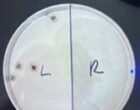
Ticks are an ever-abundant parasite that can be found nearly everywhere in the United States. With the rising concern of tick-borne transmitted diseases like Lyme disease, there has been an uptake of societal concerns that have prompted research into their biology and ecology. There are several health concerns related to ticks due to their ability to be infected with bacteria, viruses, or parasites. Between 2010-2018 there were approximately 476,000 people diagnosed with Lyme disease annually in the United States. At the Turnbull National Wildlife Refuge (TNWR) in Cheney, WA we collected American Dog ticks and Rocky Mountain Wood ticks (Dermacentor variabilis and D. andersoni) to bring back to the lab so that we could test repellents against them.

We wanted to find out if there was a repellent that worked better than others at repelling ticks. Our procedure was to collect the ticks, then test them against each of our chosen repellents to get the frequency and use Chi-square to get a p-value to see if there was significance in the repellent efficiency. Of the repellents we tested (OFF!® Deep Woods®, OFF!® Clean Feel, Essential oil mixture (Citronella oil, Tea Tree oil, Peppermint oil, & Jojoba oil), and Murphy’s Lemon Eucalyptus Bug Spray), we found that Murphy’s Lemon Eucalyptus Bug Spray had the best results. There would need to be further testing with this repellent to see if it is effective against other species of ticks.

Comments